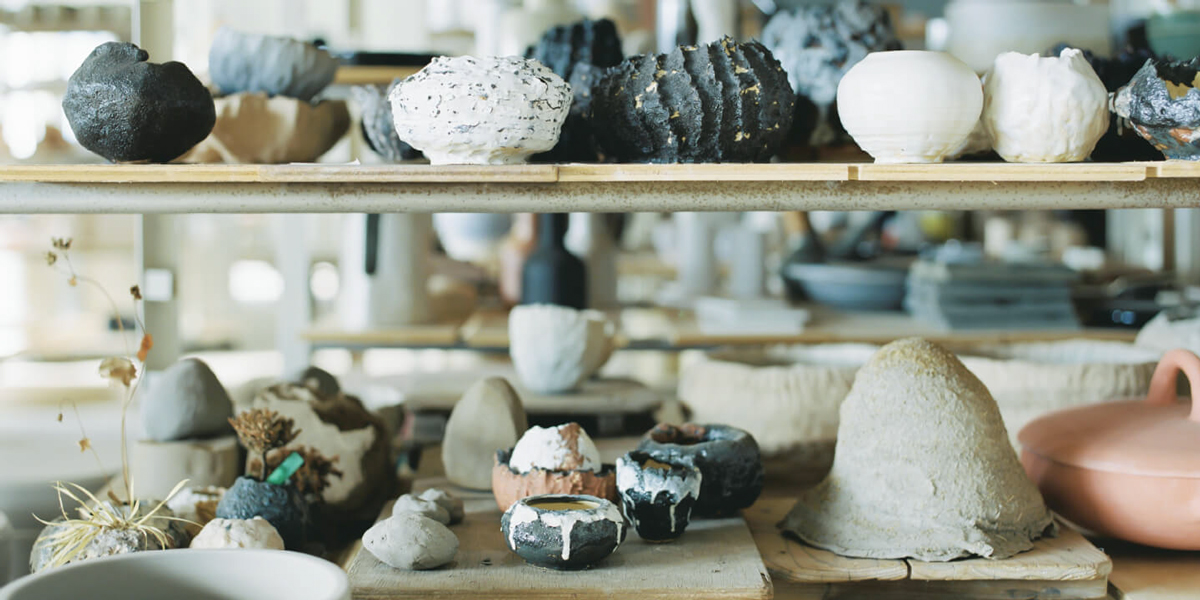衝撃を受けた50年前の風景を今でも眺められる自然なとき
この店(NOTA_SHOP)からの風景を見ているときが”自然なとき”ですね。眺めているとホッとします。ここからの風景ってずっと変わっていないんですよ、以前、Louis Allison Cortの著書『Shigaraki Pottery’s Valley』という信楽焼のリサーチブックの展覧会を手伝わせていただいたことがありました。その際に彼女が1950-60年代に撮った写真を見たら、風景や地形が今とまったく同じで、どの場所の写真かがわかることに驚きました。確かに信楽は小さな町だけれど、一番日本が景気が良かったバブルの時期でも変わっていない。これってすごいことだなと思ったんです。この場所を自分の拠点に選んだのもそういうこと。山があって田んぼがあって川があって。産業が成り立つための原料が採れて。その変わらない自然の風景が、すごくいいなと思っています。
A moment in nature I am still gazing at the landscape which touched me 50 years ago
Whenever I am gazing at the scenery from this store (NOTA_SHOP) is a moment of nature to me. It makes me relieved. Did you know that this scenery hasn’t changed for a long time? A while ago, I had an opportunity to help setting up the exhibition of a research book called “Shigaraki Pottery’s Valley” by Louis Allison Cort. I was surprised when saw her photographs form the 50-60s because the terrain and the landscape were exactly the same and you could recognise the locations where they were taken. Of course, Shigaraki is a very small town, but even in the bubble economy it remained unchanged. This is incredible, is the reason why I chose this place as my base. There are mountains, fields, rivers… and resources rich enough to sustain industries. I treasure this unchanging landscape.
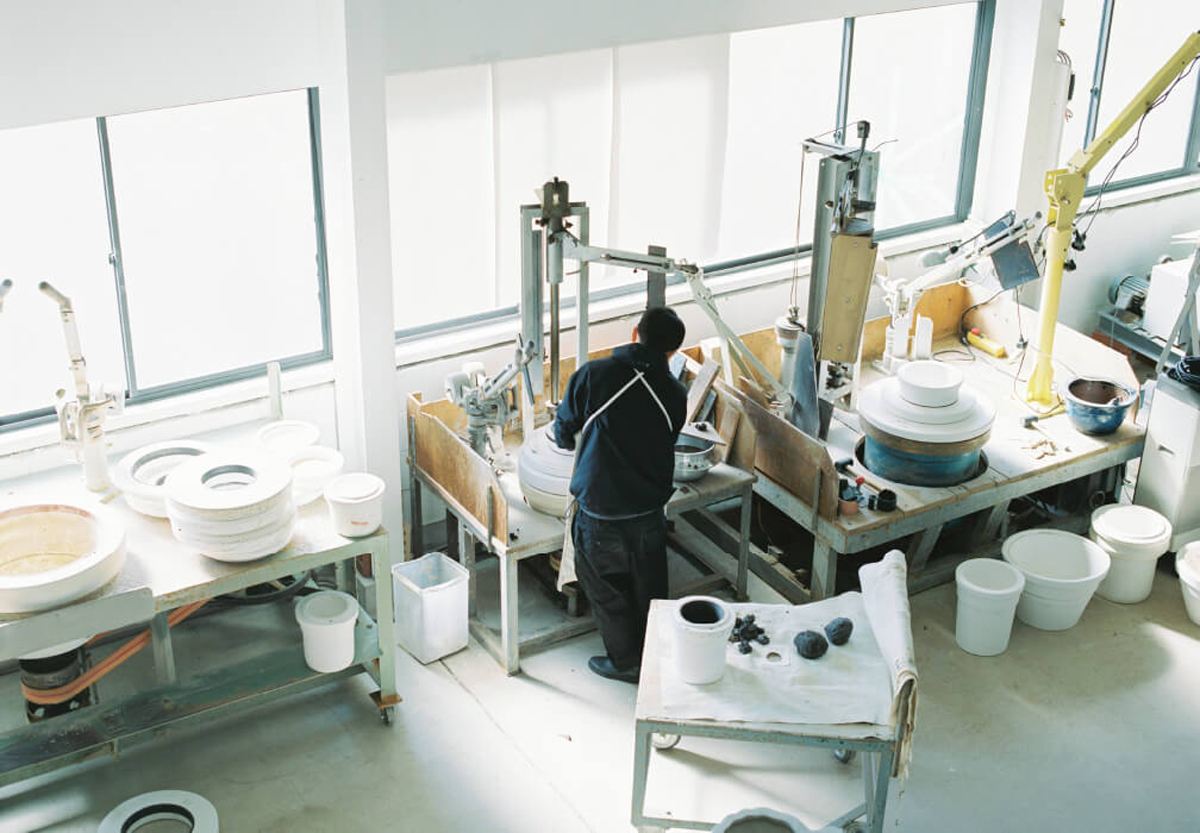
― そんな変わらない風景の信楽の町ですが、信楽焼の産地としての変化についてはどう捉えているのでしょうか?
— The town of Shigaraki did’t change in terms of landscape, but did it change as Shigaraki ware producing area?
産地としての変化と必要とされる意識
信楽焼の生産のピークは1993年。その後2014年にはそこから77%ダウンして生産量も3分の1になり、陶器産業従事者も64%減少しています。もともとは、作り手はいいものを作りたいという気持ちで始めた人も多かったし、問屋などの売り手は売れなくなったら次はどうするかという方針も決めたりしていました。でも、何を作っても売れた80年代のバブルの時代を機に、効率性を求めて一斉に量産する人が増えていった。そうすると、作るためのいい技術はあるけれど、いいものを作りたいという気持ちが減っていく。生活者の情報や流通の変化に対応できない売り手達も何を作ってよいのかわからない。そういう時代の流れで生き残っている方々というのは、ちゃんとポリシーを持っているところだったり、ちゃんと現場に生産を依頼しているところですね。そして今一番大変なのは、原料の土を掘っている人たち。依頼されない限り彼らは掘らないので廃業したり、安定した土の供給が減少しています。資源はあっても掘る人がいない。経済的に生活できなくなるので、採掘業を選ぶ人がいなくなる。そのことを今、問題視しています。
The change in the producing area - what we need to realise
The production of Shigaraki ware peaked in 1993, and by 2014, the number had gone down by 77%, producing just 1/3 and decreasing the ceramic industry workers by 64%. Initially, people started creating ceramics because they wanted to make high quality products, and when the distributors could no longer sell they laid out a strategy for what to do afterwards. However, starting from the 80s, the bubble economy made more producers seek efficiency and mass-produce pottery, because whatever you made was able to sell. When this happens, the passion for making high quality products gets forgotten even if the producers keep a good technology, and the distributors who couldn’t catch up with the needs from people or a changing way of distribution. The producers that have survived nevertheless are either the ones who have a strong policy or the ones who outsources their production to a factory. And the biggest problem right now is regarding the ones digging the soil. Because they don’t dig unless they have orders, some have to close down their businesses, and supply of soil has become decreased. Even if there are resources, there’s no one there to dig them. Fewer people choose to work in mining industry because you can’t live on it. I see that as a problem.
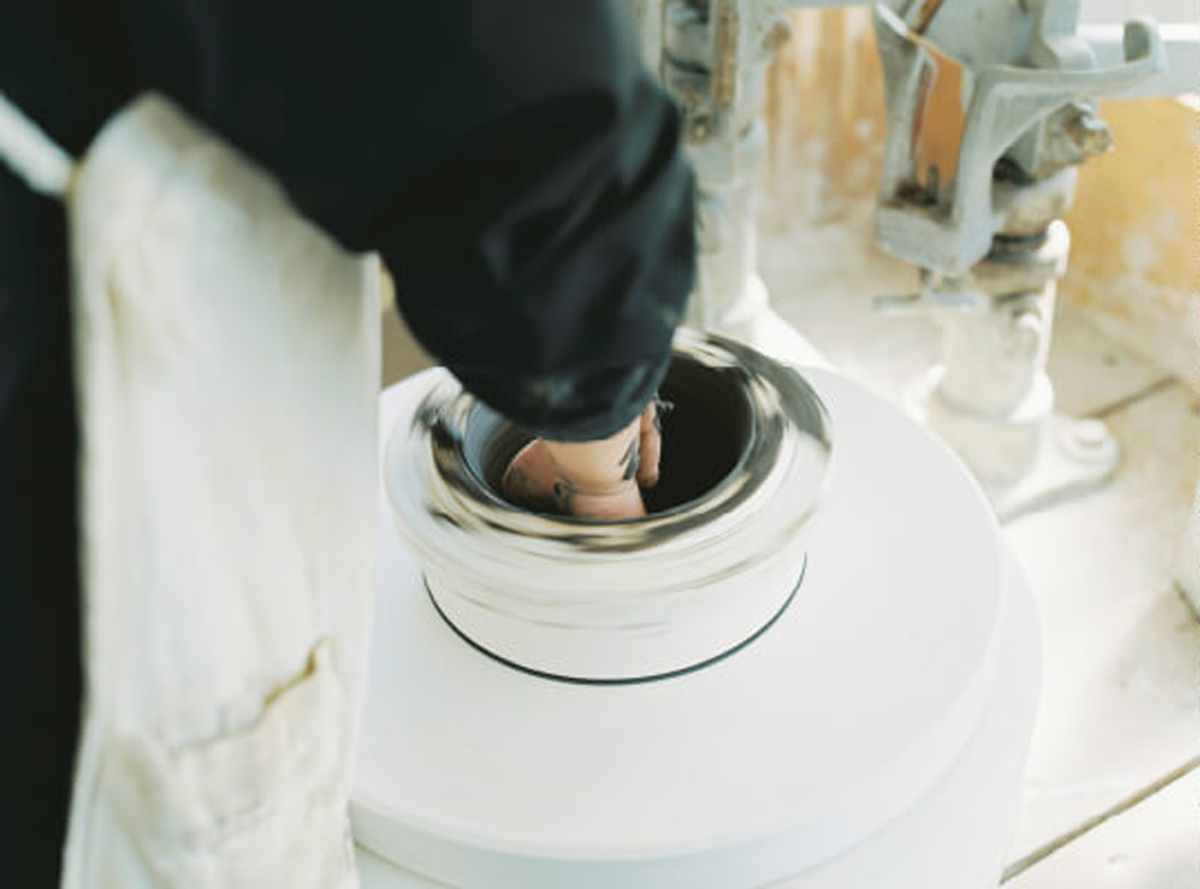
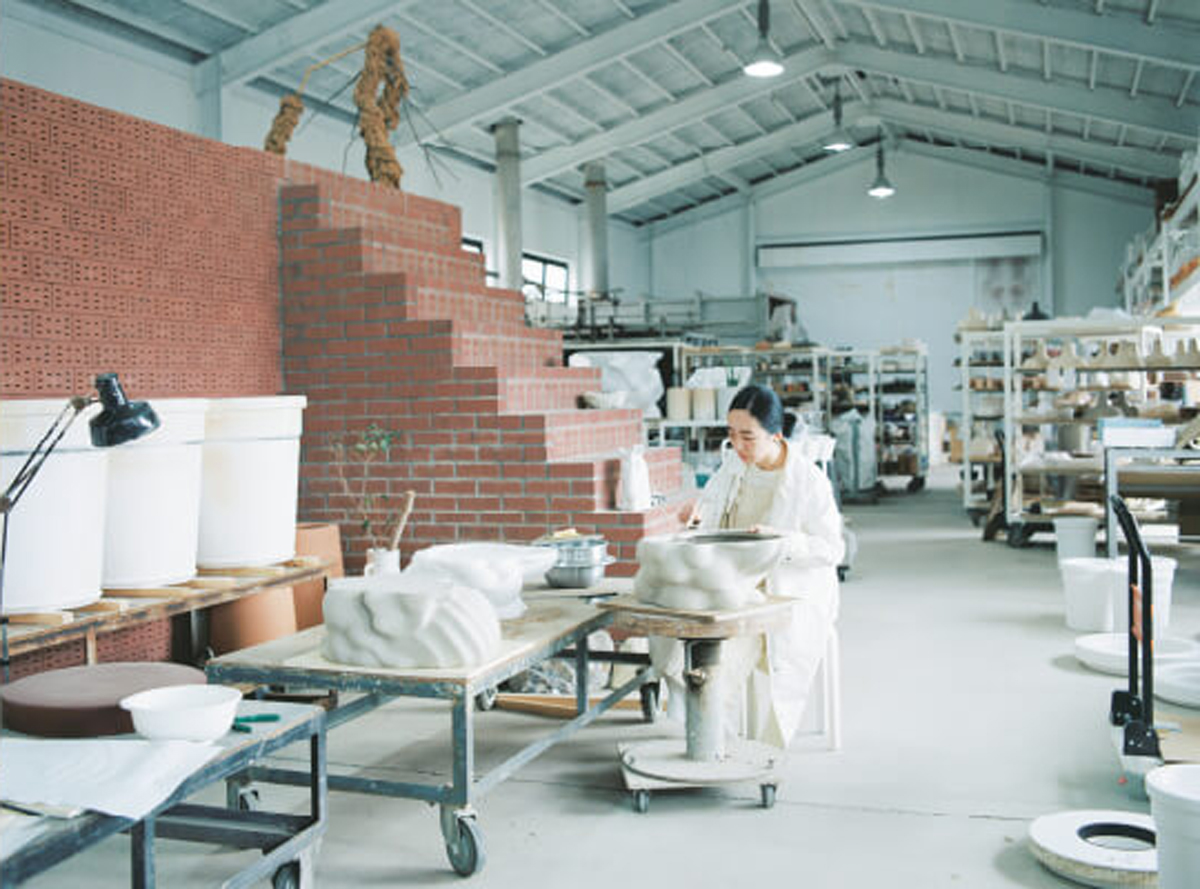
― 信楽に拠点を構えるNOTA&designが考える今後のビジョンとは?
— How do you see the future of NOTA&design located in Shigaraki?
大きいものを作っていく信楽に根ざし発信すること
20年後は、土も、釉薬の供給も無くなっていって焼き物を作れなくなるんじゃないだろうか……。そうなると、自分で全部やっていくしかなくなるかもしれない。NOTA&designとしてのやりたいことは、あくまで産地の特徴を活かした大きいものを作ること。食器は売りやすいけれど、それが僕らのスタンスなんです。
信楽焼きは大きなものを作れる産地。それは原材料の土にあります。1万2000年前から現在も2ミリずつ北上している琵琶湖の祖先的な湖があって、その栄養分が堆積してできた古琵琶湖層からできたコシの強い粘土層が信楽の土。この土が大きい焼き物に適していたんです。信楽焼は火鉢や風呂釜、ガーデン用品などでも知られていますが、大きい窯があるからできることなんです。そして食器以外の生産をしている産地の特徴かもしれないですが、原料メーカーにものすごい量のサンプルがある。例えば釉薬。器だと食べ物を盛り付けて美味しいそうに見える色など、釉薬のバリエーションの幅も決まってきますが、信楽が作るものはエクステリア周りが多く、建築とも相性が良かったから、いろんな種類の色や質感を使えるし、それだけのノウハウが歴史とともに積み重ねられています。正直、信楽焼自体が良いか悪いかという部分にはあまり興味は無くて、こんなふうに僕たちは実際に信楽の恩恵受けているので、なるべく大きいものを作って発信していきたいんです。
Making things large Rooted in Shigaraki, spreading to the world
Twenty years from now, we might not be able to make pottery because there will be no more clay or glaze available... What I want to do as NOTA&design is to make large products by making use of the characteristics of the region. Even if tableware are easier to sell, this is our stance.
In Shigaraki you can produce large products. The reason for that is the material, soil. There is a lake, kind of like an ancestor to Lake Biwa, which has been moving two millimetres northward since 12,000 years ago and which is still moving today. And the nutrients from that lake have been deposited in the clay layers of Lake Biwa, and that makes Shigaraki’s clay, unique in its elastic texture. This soil was good for making large pottery. Shigaraki is also known for its hibachi (traditional Japanese heating device), bathtubs, and garden supplies, but this is only possible because of its large kilns. And perhaps this is a characteristic of a region that produces something other than tableware that there's a huge amount of samples at the raw material manufacturers. Glazes, for example. With tableware, the variation of glaze is limited mostly to the colors that make food look delicious on a plate. But because the products in Shigaraki are often used around the exterior and go well with architecture you can use a wide range of colors, and the know-how of that has been accumulated over time. To be honest, I'm not really interested in whether Shigaraki ware itself is good or bad. Since we enjoy the benefits from Shigaraki in this way, I'd like to make something as large as possible and spread to the world.
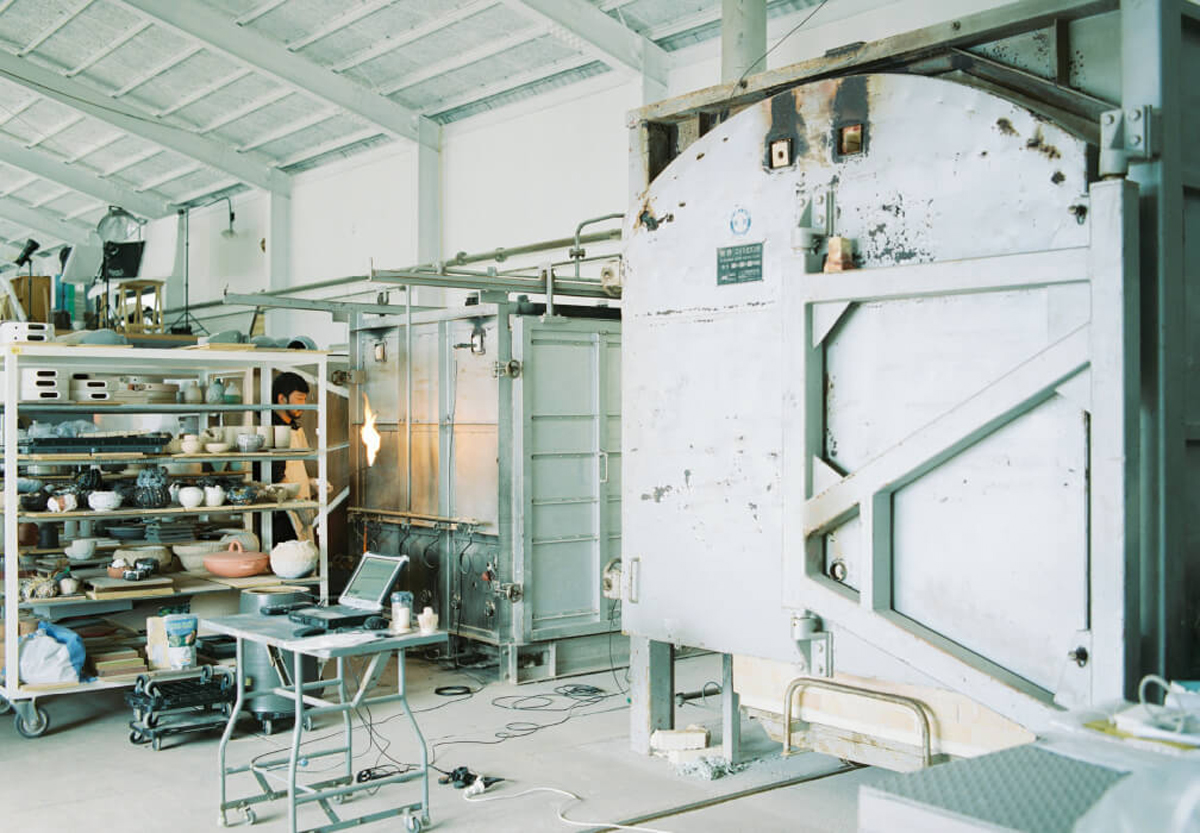
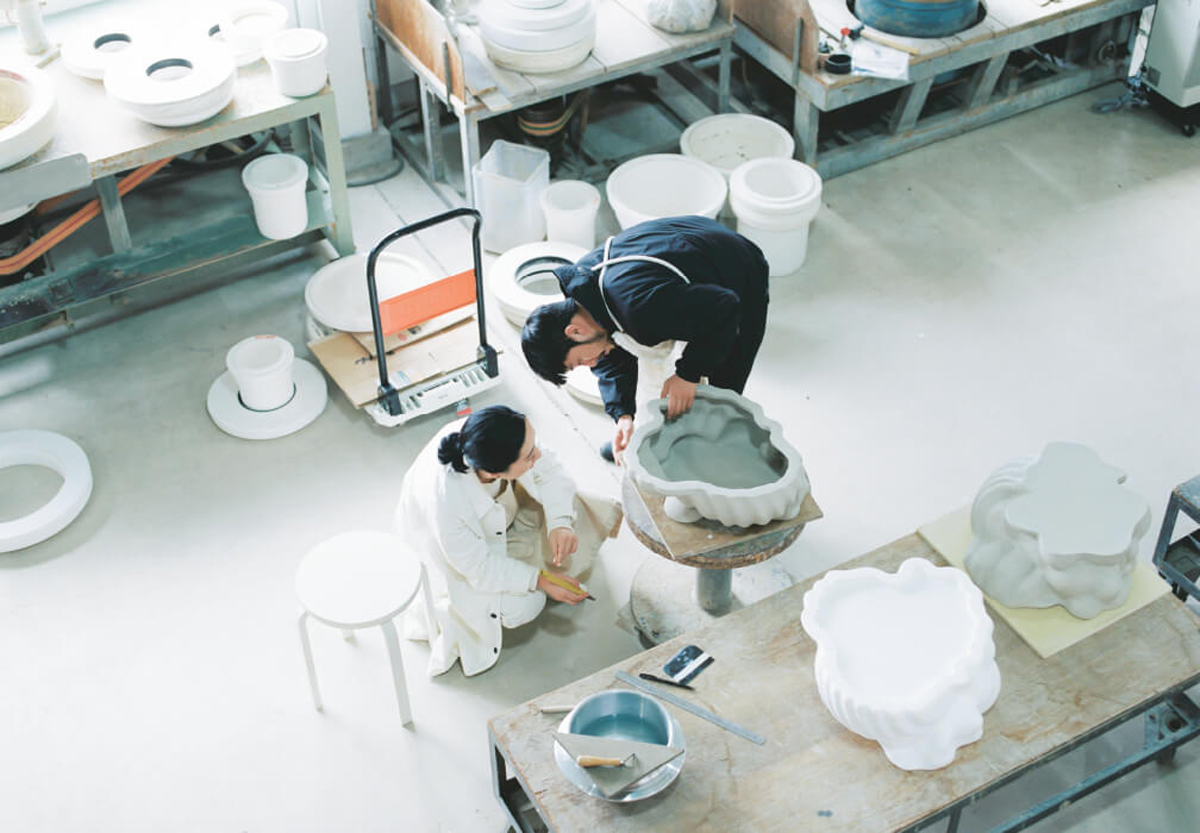
― NOTA&designが考える「店」とは。そして(THISIS)SHIZENではどんなことが起こるのでしょうか。
— What is a “store” defined by NOTA&design? And what will happen in (THISIS)SHIZEN?
感覚を積み重ねて形づくる機能の先にあるもの
焼き物って機能以外の部分が重視されることが多いじゃないですか。それって自分の感覚を積み重ねていくしかないと思うんです。僕はデザインやアート、音楽が好きで、グラフィックデザインを学びに大学を休学してロンドンへも行きました。信楽は焼き物の産地だけれど、そこに特化する必要はないと思っていて。機能だけじゃない世界を若い人に向けて育んでいきたいと思っています。今はネット社会で実際に体験をする機会が減っていると思うけれど、お店がひとつあれば、町って変わると思うんです。町におもしろい店ができたことをきっかけに、飲食店ができたり、デザインの会社ができたり。NOTA_SHOPもそんな場所になればいいなと思っています。
そしてそれは(THISIS)SHIZENに対しても思うこと。機能じゃないところで、今までにないものを作っていく。みんながすでに理解できている状態にはあまり興味はないから、その想像がつかないことへのチャレンジが大事だしおもしろいと思うんです。僕はゼロからものを作るタイプではなくて、何かお題を与えられて、ある状態のものを整えたり、世の中にありそうでないものを提案したり、解決方法を探すことが得意。僕が作る器が、花や植物が入って初めて花器や鉢になる。それをこの(THISIS)SHIZENで僕なりに考えることがおもしろいし、そういうデザイナー的思考が僕にとって一番の自然なのかもしれないです。
Accumulate bodily sensations to shape something beyond the function
In pottery, there is a lot of emphasis on the things other than its function. I think it's just a matter of accumulating your own bodily sensations. I love design, art and music, and I even took a gap year from the university to go to London to study graphic design. Shiga is an area producing pottery, but I don’t think that you have to specialise in that necessarily. I would like to foster a world for young people that goes beyond function. The digitised society of today gives us fewer opportunities to experience things in real life, but I think just one interesting shop could change a town. Inspired by that shop, some others might open restaurants and bars as well as design offices. I hope that NOTA_SHOP will become such a place too.
And I feel the same about (THISIS)SHIZEN. Creating something that has never been done before, focusing on things other than function. I'm not really interested in what everyone already understands. I think it's more important and interesting to challenge something you can’t imagine. I'm not a type of person who makes things from a scratch, but I'm good at finding solutions to a given challenge, arranging things in a certain state or suggesting things you would think exist in the world. My tableware only becomes a vase or a pot when you put flowers and plants. It's interesting to think about those things in my own way with (THIS)SHIZEN, and maybe this kind of design thinking is the most natural thing for me.

